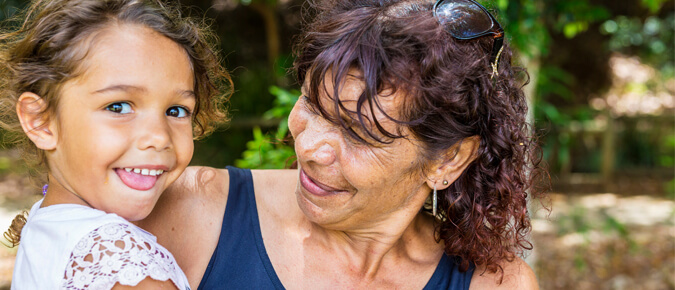
Australia is on track to become one of the first countries to eliminate cervical cancer as a public health problem, but Aboriginal and Torres Strait Islander women will miss out unless we act urgently.
A new report led by Cancer Council NSW and the Australian National University reveals Aboriginal and Torres Strait Islander women experience cervical cancer at the same rates as developing regions of the world, despite having access to the vaccination programs and screening programs.
Our study found Aboriginal and Torres Strait Islander women face numerous barriers to care including:
- limited access to health care - physical and financial barriers, or limited access to care that is culturally safe and appropriate
- issues relating to health care providers, such as limited female practitioners or previous negative experiences
- beliefs around cancer, including stigma
- low awareness about HPV vaccination and cervical screening, or a lack of culturally appropriate information
- impacts of colonisation.
Last year, the World Health Organization released a strategy for eliminating cervical cancer in every country. The strategy calls for three targets to be achieved world-wide by 2030:
- 90% of girls to be vaccinated against HPV (human papillomavirus) by age 15.
- 70% of women to be screened at least twice in their lifetime with an HPV test.
- 90% of women to have access to treatment for precancer and cancer.
To achieve elimination, cervical cancer incidence must be reduced by around 70 per cent in Indigenous women in Australia but we are a long way from reaching that target. We know elimination is achievable if we vaccinate, screen and treat but we are just not adequately doing those three things for Indigenous populations.
Cervical screening, previously known as a Pap smear, was traditionally conducted by a GP. Only about a third of Aboriginal and Torres Islander women are being screened regularly and we've got a long way to go to hit WHO targets. One opportunity is that cervical screening can now be done via self-collection through the Government's National Cervical Screening Program.
Self-collection could help address several of the barriers to screening for Aboriginal and Torres Strait Islander populations. It's quick, simple, and accurate. There is a strong element of empowerment and control via self-collection.
We know how to prevent cervical cancer and we have the tools. Now it is about working out the best implementation, that will work for all peoples in Australia.
We are calling for Indigenous Australians to have the same access and quality of care to help bridge the gap with the rest of the population.
The report found several facilitators that can overcome barriers to screening, which include openly talking about screening, trusting relationships with health professionals, and overcoming logistical barriers and privacy concerns.
Moreover, to achieve equitable health outcomes for Indigenous peoples, strategies need to centre on Indigenous leadership, knowledge, and solutions with ongoing community engagement.
We need a culture shift of not accepting the status quo of inequity. We need to urgently remove these inequities and eliminate cervical cancer in Indigenous women.






